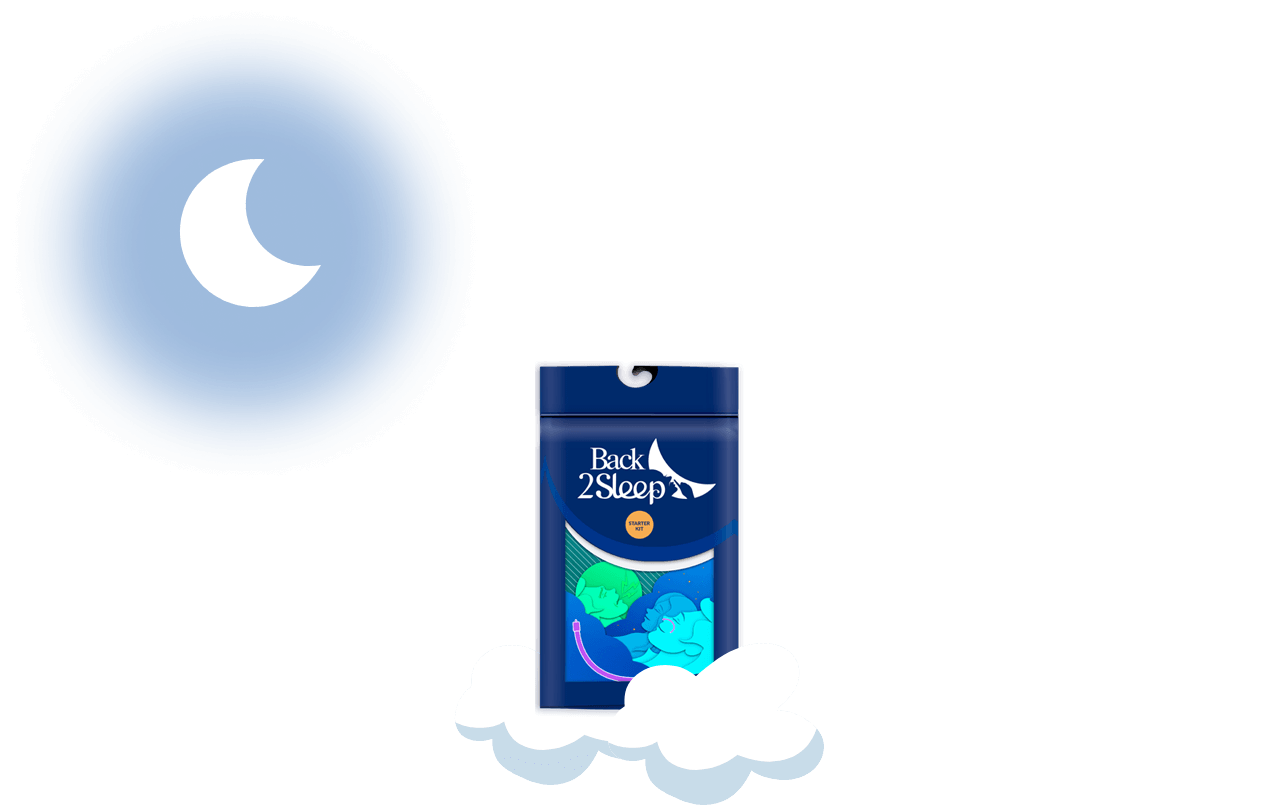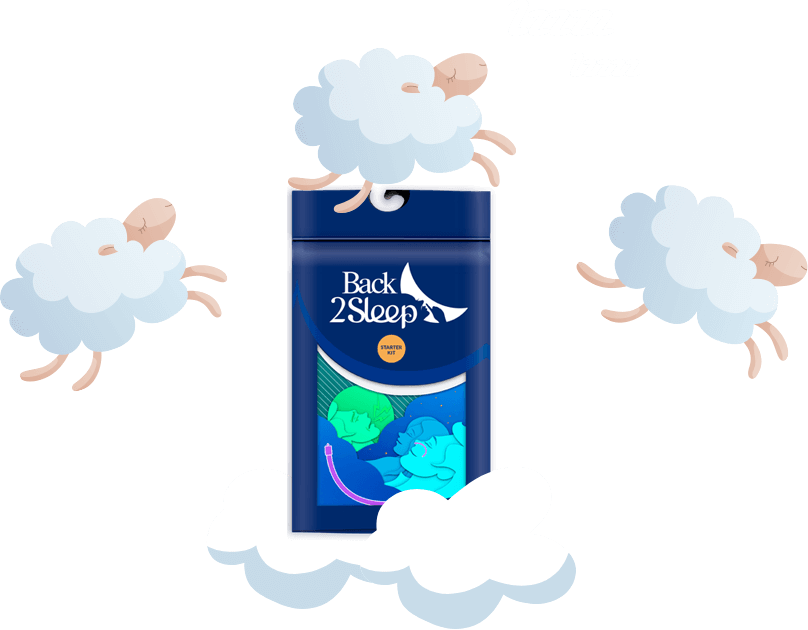Why Do People Snore? Understanding Causes, Consequences & Effective Solutions
Discover the scientific reasons behind snoring, its serious health implications, and proven treatments including innovative nasal stent technology with 92% satisfaction rates
Snoring affects nearly half of all adults, disrupting not just your sleep but your partner's rest and your relationship quality. Whether you're wondering "why do I snore every night" or "what causes loud snoring in adults," understanding the root mechanisms behind this common sleep disruption is essential for finding effective solutions. Medically termed ronchopathy, snoring results from airway narrowing that creates vibrations in throat tissues during sleep. While often dismissed as merely annoying, persistent snoring can signal serious health conditions like obstructive sleep apnea, cardiovascular disease, and chronic fatigue. This comprehensive guide explains the anatomical, lifestyle, and medical factors causing snoring, explores its profound health consequences, and presents evidence-based solutions—from simple position changes to revolutionary nasal stent technology—to help you and your loved ones finally achieve silent, restorative sleep.

Critical Statistic: Research indicates that 25-50% of adults snore regularly, with 90 million Americans reporting snoring at some point. More concerningly, approximately half of habitual snorers actually have undiagnosed obstructive sleep apnea—a potentially life-threatening condition.
The Snoring Epidemic: Real Numbers That Demand Attention
Johns Hopkins research reveals that severe sleep apnea in middle or old age can increase your risk of premature death by up to 46%. Meanwhile, people with severe sleep apnea who used treatment devices nightly experienced measurable reductions in blood pressure levels, demonstrating the profound cardiovascular impact of addressing snoring disorders.
What Is Snoring? The Medical Science Behind the Noise
Snoring occurs when airflow through your mouth and nose becomes obstructed during sleep, causing surrounding tissues to vibrate and produce that characteristic rumbling or whistling sound. During sleep, the muscles in your soft palate, throat, tongue, and uvula relax significantly. In some individuals, this relaxation creates enough narrowing of the upper airway that incoming air faces substantial resistance.
The Physiological Mechanism
As you transition into deeper sleep stages, particularly REM sleep, throat muscles become maximally relaxed. This tissue laxity can cause partial or complete airway obstruction. When air forces its way through the narrowed passage, the soft tissues flutter and vibrate—much like a flag flapping in strong wind. The narrower the airway becomes, the more forceful the airflow must be, resulting in louder snoring sounds.

Ronchopathy: The Medical Term
In medical terminology, snoring is classified as ronchopathy. This condition exists on a spectrum from simple, harmless snoring (primary snoring) to obstructive sleep apnea (OSA), where breathing actually stops repeatedly throughout the night. Understanding where your snoring falls on this spectrum is crucial for determining appropriate treatment.
Primary Snoring vs. Sleep Apnea: Primary snoring means tissues vibrate and create noise, but you're still getting sufficient oxygen and your sleep isn't significantly disrupted. However, if snoring includes gasping, choking sounds, or breathing pauses witnessed by a partner, it may indicate sleep apnea requiring immediate medical evaluation.
Why Do People Snore? Comprehensive Causes Explained
Snoring stems from multiple interrelated factors—anatomical, physiological, and lifestyle-based. Understanding these causes helps identify which treatments will be most effective for your specific situation.
Anatomical and Structural Factors
Your physical structure plays a fundamental role in snoring susceptibility. Several anatomical features directly contribute to airway narrowing:
👃 Nasal Obstructions
Deviated septum, nasal polyps, enlarged turbinates, or narrow nasal passages force mouth breathing, significantly increasing snoring likelihood and severity.
🦷 Oral Structure Abnormalities
Low, thick soft palate, elongated uvula, large tongue, or narrow throat create physical obstructions that restrict airflow during sleep.
🫁 Enlarged Tonsils & Adenoids
Particularly common in children, oversized tonsils and adenoids substantially block airways, causing both snoring and breathing difficulties.
🧬 Genetic Predisposition
Inherited traits including nose shape, tongue size, jaw structure, and tissue composition all influence your natural snoring tendency.
Obesity: The Most Significant Modifiable Risk Factor
Excess weight dramatically increases snoring risk. When fat deposits accumulate around the neck and throat, they physically compress airways from the outside. This external pressure narrows the breathing passage, making tissue vibration and snoring inevitable. Research consistently shows that even modest weight loss—as little as 10% of body weight—can produce substantial snoring reduction by relieving pressure on respiratory pathways.
Demographics: Age, Gender, and Hormones
Certain demographic factors significantly influence snoring prevalence:
Gender differences: Men snore approximately 25% more frequently than women, likely due to anatomical differences including narrower airways, larger neck circumferences, and hormonal influences affecting muscle tone.
Age progression: Snoring worsens with age as throat muscles naturally lose tone and tissues become less elastic. The condition affects far more middle-aged and older adults than younger individuals.
Hormonal changes: Postmenopausal women experience increased snoring rates as protective hormones decline, making their snoring prevalence approach that of age-matched men.
Learn About Sleep ApneaLifestyle and Environmental Triggers
Beyond fixed anatomical factors, numerous modifiable lifestyle choices directly impact snoring:
Surprising Factor: Even highly fit individuals can snore! Athletes and regular exercisers aren't immune—after particularly exhausting workouts, muscle fatigue can lead to excessive relaxation during sleep, triggering temporary snoring episodes.
The Serious Consequences: Why Snoring Demands Treatment
Far from being merely a nighttime nuisance, chronic snoring carries substantial health and social consequences that worsen over time without intervention. Understanding these impacts underscores the importance of seeking effective treatment.

Cardiovascular Health Risks
The connection between snoring and heart health is profound and well-documented. Untreated sleep apnea—present in roughly half of chronic snorers—subjects your cardiovascular system to repeated stress throughout the night:
When breathing stops during apnea episodes, blood oxygen levels plummet while carbon dioxide accumulates. This triggers emergency responses: blood pressure spikes, heart rate becomes irregular, and stress hormones flood your system. Night after night of these events damages blood vessels, promotes inflammation, and strains your heart.
Metabolic and Hormonal Disruption
Poor sleep from snoring and apnea wreaks havoc on metabolic processes:
Diabetes risk elevation: Sleep disruption impairs insulin sensitivity and glucose metabolism, substantially increasing Type 2 diabetes development risk.
Weight gain acceleration: Disrupted sleep alters hunger hormones (increased ghrelin, decreased leptin), driving increased appetite and weight gain—which further worsens snoring in a vicious cycle.
Cognitive and Mental Health Impact
The brain requires quality sleep for restoration, memory consolidation, and optimal functioning. Chronic sleep fragmentation from snoring produces measurable cognitive deficits:
Relationship and Social Consequences
Snoring's impact extends far beyond the individual snorer, severely affecting relationships and household harmony:
"My wife was on the verge of requesting separate bedrooms. The walls literally shook from my snoring—it could be heard from the second floor. Our marriage was suffering until we found an effective solution."
"I was terrified to travel with friends or sleep on public transportation. The embarrassment from my snoring kept me isolated and anxious about social situations involving sleep."
"My partner was losing so much sleep from my snoring that her health started declining. The relationship tension was unbearable. Solving my snoring literally saved our relationship."
Partners of snorers suffer significantly: Studies show bed partners of chronic snorers lose an average of 1-2 hours of quality sleep nightly, leading to their own health problems including fatigue, irritability, and increased accident risk.
How Can You Stop Snoring? Proven Solutions That Work
Addressing snoring requires a comprehensive approach tailored to its underlying causes. Solutions range from simple lifestyle modifications to advanced medical devices and surgical interventions.
Lifestyle Modifications: First-Line Interventions
For many individuals, strategic lifestyle changes produce substantial snoring reduction:
Weight Management
Achieve and maintain healthy weight through balanced nutrition and regular exercise. Even 10-15 pound loss can dramatically reduce snoring.
Sleep Position Change
Commit to side sleeping using body pillows, positional devices, or tennis ball techniques to prevent back sleeping.
Alcohol Avoidance
Eliminate alcohol consumption within 3-4 hours of bedtime to prevent excessive muscle relaxation during sleep.
Sleep Hygiene
Establish consistent sleep schedules, ensure 7-9 hours nightly, and create optimal bedroom conditions for quality rest.
Harvard Health Finding: Research confirms that sleeping on your side rather than your back can significantly reduce both snoring intensity and duration in many individuals without sleep apnea—a simple, cost-free intervention.
Nasal Passage Clearance Methods
When nasal congestion contributes to snoring, these techniques help restore airflow:
The Back2Sleep Revolutionary Solution: Nasal Stent Technology
For individuals requiring more than lifestyle changes, Back2Sleep offers a groundbreaking nasal stent that represents a decade of research and development—a truly innovative approach to stopping snoring and treating mild-to-moderate obstructive sleep apnea.

How Back2Sleep Works: The Science of Internal Airway Support
Unlike external devices that merely widen nostrils, Back2Sleep functions from within. This CE-certified medical device consists of a soft, flexible silicone tube inserted through one nostril, extending to reach the soft palate area. This strategic internal positioning prevents airway collapse—the fundamental mechanism behind both snoring and obstructive sleep apnea.
The innovative design supports the soft palate throughout the night, maintaining open airways even during deep sleep when muscles become maximally relaxed. By preventing the tissue vibrations that create snoring sounds and the complete obstructions that characterize sleep apnea, Back2Sleep addresses both conditions simultaneously.
⚡ Immediate Effectiveness
92% of users report noticeable improvement from the very first night of use, with measurable reductions in snoring frequency and volume.
🎯 Precision Customization
Available in four sizes (S, M, L, XL) to accommodate individual anatomical variations, ensuring optimal comfort and maximum effectiveness.
🌙 Silent & Comfortable
Completely electricity-free, produces zero noise, and uses medical-grade silicone that's gentle on delicate nasal tissues for all-night comfort.
✈️ Travel-Friendly Design
Compact, portable packaging makes it ideal for business trips, vacations, or any travel where consistent sleep quality is essential.
Back2Sleep vs. Traditional CPAP: A Clear Winner for Many
While CPAP machines remain the gold standard for severe sleep apnea, Back2Sleep offers compelling advantages for mild-to-moderate cases:
| Feature | Back2Sleep Nasal Stent | CPAP Machine |
|---|---|---|
| Setup Time | 10 seconds - simple insertion | 5+ minutes nightly setup |
| Portability | Fits in pocket, perfect for travel | Bulky equipment requiring power outlet |
| Noise Level | Completely silent operation | Machine noise can disturb partners |
| Partner Impact | Invisible, no disturbance whatsoever | Visible mask, potential noise issues |
| Comfort Level | Soft silicone, minimally invasive | Mask can be uncomfortable, claustrophobic |
| Compliance Rate | High - easy to use consistently | Lower - many users abandon due to discomfort |
| Initial Cost | €39 for complete starter kit | €800-2000+ for equipment |
| Monthly Cost | €24.91-€35 subscription | €50-100+ for supplies and maintenance |
10 Years of Development: Back2Sleep represents a decade of intensive research and refinement. Early prototypes using metal mesh caused nosebleeds during testing. The development team persisted, eventually creating the current soft silicone design that combines maximum effectiveness with superior comfort.
Real Results from Real People
"My AHI index was 27 and I used CPAP for 10 years. I experienced initial discomfort with the nasal stent, but after the 3-5 day adaptation period, I don't even notice it. So much more convenient for travel!"
"I can finally sleep on planes and buses without anxiety about my snoring embarrassing me. My social life has completely transformed since finding this solution."
"At first I was skeptical, but the more I used it, the more I trusted it. The adaptation period was about 4 days for me, then it became completely natural and comfortable."
Pricing and Availability Options
Back2Sleep offers flexible purchasing options to suit different needs and preferences:
Press Recognition: Since its June 2017 launch, the press regularly quotes Back2Sleep (formerly Nastent™) and its benefits. Featured in top health publications for its innovative approach to treating snoring and sleep apnea.
Other Effective Anti-Snoring Devices and Treatments
Beyond Back2Sleep, several other devices and treatments can help reduce snoring, each working through different mechanisms:
Mandibular Advancement Devices (MADs)
Oral appliances designed by dentists reposition the lower jaw slightly forward during sleep. This advancement pulls the tongue forward as well, opening the airway and reducing tissue vibration. Custom-fitted MADs generally work better than over-the-counter "boil-and-bite" versions, though at higher cost.
Nasal Dilator Strips
External adhesive strips applied across the nose bridge physically widen nostrils from outside. While helpful for mild nasal congestion, they cannot address deeper airway obstruction at the soft palate level, making them less effective than internal solutions like Back2Sleep for moderate-to-severe snoring.
Positional Therapy Devices
For positional snorers who only snore when sleeping on their backs, various devices encourage side sleeping. These range from specialized pillows to wearable vibrating devices that gently alert you when you roll onto your back.
Tongue Retaining Devices (TRDs)
These oral devices use suction to hold the tongue forward during sleep, preventing it from falling backward and blocking the airway. TRDs can be effective but many users find them uncomfortable for extended wear.
Medical Evaluation First: Before purchasing any anti-snoring device, get screened for obstructive sleep apnea. Approximately half of chronic snorers have undiagnosed OSA, which requires proper medical treatment—not just snoring reduction devices.
Medical and Surgical Interventions for Chronic Snoring
When anatomical abnormalities or severe conditions underlie snoring, medical treatments or surgery may be necessary to achieve lasting results:
Consultation essential: A thorough evaluation by an otolaryngologist (ENT specialist) or sleep medicine physician determines which interventions are appropriate for your specific anatomical situation and snoring severity.
Prevention Strategies: Maintaining Snore-Free Sleep Long-Term
Once you've addressed snoring successfully, maintaining those results requires ongoing attention to health and lifestyle factors:
Weight Maintenance
Continue healthy eating patterns and regular exercise to prevent weight regain that would narrow airways again.
Consistent Sleep Habits
Maintain regular sleep schedules, adequate sleep duration, and optimal sleeping positions to prevent snoring recurrence.
Ongoing Allergy Management
Continue treating seasonal and environmental allergies to prevent nasal congestion that triggers snoring episodes.
Device Compliance
If using Back2Sleep or other devices, maintain consistent nightly use and replace components according to recommendations.
Success Story: "After implementing side sleeping, weight loss, and using Back2Sleep nightly, I've maintained completely silent sleep for over a year. My energy levels are transformed and my relationship has never been better." — Pierre, 42
Frequently Asked Questions About Snoring
Ready to End Snoring and Reclaim Peaceful Sleep?
Join over 1 million people worldwide who have stopped snoring and transformed their sleep quality with Back2Sleep's innovative nasal stent technology.
Get Your Starter Kit - €39✓ 92% satisfaction rate ✓ Immediate results ✓ 15-day return policy
Conclusion: Take Action Against Snoring Today
Snoring is far more than a nighttime nuisance—it's a serious condition affecting nearly half of all adults, disrupting relationships, compromising health, and signaling potentially life-threatening conditions like obstructive sleep apnea. Understanding why you snore is the essential first step toward effective treatment.
Whether your snoring stems from anatomical factors, lifestyle choices, or underlying medical conditions, proven solutions exist for every situation. From simple interventions like weight loss and position change to revolutionary medical devices like the Back2Sleep nasal stent, you have more options than ever before.
The Back2Sleep solution represents a decade of innovation, combining the effectiveness of internal airway support with the simplicity of a 10-second insertion. With 92% user satisfaction, immediate results, and travel-ready convenience, it offers a compelling alternative to bulky CPAP machines for millions suffering from snoring and mild-to-moderate sleep apnea.
Don't let another night of disrupted sleep, strained relationships, or mounting health risks pass without action. Quality sleep is foundational to health, happiness, and longevity. Whether you start with lifestyle modifications or invest in proven medical technology, the most important step is taking action today.
Your Next Steps: Begin with lifestyle modifications—weight management, sleep position changes, and alcohol avoidance. If snoring persists after 2-3 weeks, try the Back2Sleep Starter Kit to find your perfect solution. For loud snoring with breathing pauses, consult a sleep specialist immediately to rule out sleep apnea.








